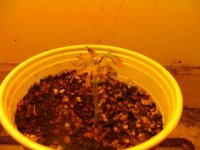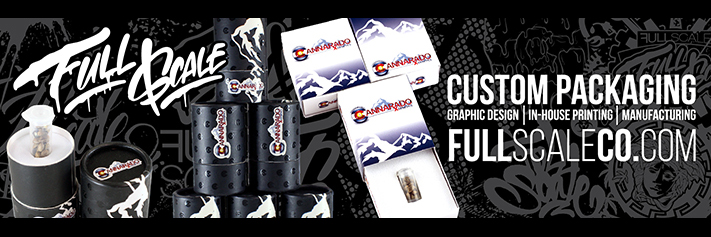You are using an out of date browser. It may not display this or other websites correctly.
You should upgrade or use an alternative browser.
You should upgrade or use an alternative browser.
##> Cloning in Dirt: A Pictorial Tutorial <##
- Thread starter Butcher Bob
- Start date
nannymouse
Well-known member
Love the simple ways. Never understood why Cannabis needed such special doodads and gizmos to grow. Even from seed, you can actually put them in plain old dirt and they will grow! If they don't grow like in real nature, something is definitely wrong.
What i have to tell new gardeners, even with 'other' plants, is, when the plant is a little bugger, be it a 'slip' or a newly planted seed...leave them alone! I mean, don't mess with them, move them around, juggle, etc. Those new roots can be fragile, so let em grow, fill out that rootball a little, before molesting them.
What i have to tell new gardeners, even with 'other' plants, is, when the plant is a little bugger, be it a 'slip' or a newly planted seed...leave them alone! I mean, don't mess with them, move them around, juggle, etc. Those new roots can be fragile, so let em grow, fill out that rootball a little, before molesting them.
I gave this method a try for the first time last week. I shoved the cuttings into Espoma Organic Seed Starting mix and in the next couple of days the mix shoved back. Slowly several of the taller cuts were up against the top of the container and another tipped over. What I do wrong?
I think the problem is that I topped each plant and used the fatter main stem instead of the thinner lower branches. Even with the 45 degree cuts they must have compressed the peat mix which apparently decompressed with time, pushing the cuts up. These cuts were #2 pencil thick instead of the thin ones Bob used in this tutorial.
Butcher Bob
Lone Wolf
I gave this method a try for the first time last week. I shoved the cuttings into Espoma Organic Seed Starting mix and in the next couple of days the mix shoved back. Slowly several of the taller cuts were up against the top of the container and another tipped over. What I do wrong?
Did you follow these two steps?...I think the problem is that I topped each plant and used the fatter main stem instead of the thinner lower branches. Even with the 45 degree cuts they must have compressed the peat mix which apparently decompressed with time, pushing the cuts up. These cuts were #2 pencil thick instead of the thin ones Bob used in this tutorial.
It's important to water them after sticking the stem in the soil, for this reason......that I kin then shove down into the dirt...
View attachment 316224
The cup then gits watered, which will press the soil around the stem...
View attachment 316225
Was the stem hollow?...if yes, then maybe the soil was too moist to let expanding air out?...Medium/stem contact - Nothin kills a root tip like air...so you wanna make sure there's good contact tween the medium yer usin and the stem of the cut, cuz if a root tip starts formin on the stem and it encounters air, it will die off & scab over. In this tutorial, waterin the cutz after they were in the dirt ensured that the water would settle the dirt up against the stem effectively.
Medium saturation - Unless yer in a bubbler, ya wanna make sure not to over-saturate the medium yer usin. If yer too wet, the cut will focus on drawin in water insteada makin roots, so yer jus lookin fer moist...like cake.
Watering the cut in, should eliminate any air pockets in the soil, and put the medium in contact with the stem, which should hold it in. And if the stems are hollow, not having the medium too wet will allow any expanding air to pass through it, without pushing the stem up like a cork.
This is just a best guess though, as I'm not entirely sure I'm understanding everything correctly.
Butcher Bob
Lone Wolf
Hmm, strange...sounds like it should have worked fine for you, despite when you added the water. Seems puzzling why the cut would lift up. The stem size should have been ok too...I've done this with pretty thick stems before. Keep playing around with them, and let us know how they proceed. :)
MyDBear
Not so Grumpy today

May we have a moment of silence.
I know what you mean by losing a clone. I always take at least 3 or 4 cuts and if I wind up with just 1 I'm happy about it. This go round I took 4 and one didn't make it. That lets me with 3 plants that I didn't have, I'm happy. I've always cloned in dirt been doing it that way since the late 70s. I don't use a dome, I use a cabinet to clone in and that's my dome. Keep the soil moist, mist a lot and keep the temps in the high 70s. Mother nature will do the rest.
Also, the roots are different in plants that are cloned in one of those bubblers. Plants that are rooted in dirt will have fine hairs on the roots and plants that root in water will have smooth roots. These smooth roots have a hard time getting started in dirt.
Last edited:
Butcher Bob
Lone Wolf
When I first started growing cannabis, I was the same way....trying to save everything. But, as my mothers in veg started to provide more than I needed, I learned the value of trimming, which left me with an overabundance of cuts. So I started experimenting with cloning, without the fear of failing and killing them. Got to a point where I was taking 2 to 4 cuts, when I only needed one clone. The one that was healthiest after rooting would be kept and the rest would be discarded. That fear was a good hurdle to get over...once it was gone, I was like Edward Scissorhands. :teeth:I'm always afraid to lose a cutting, so I don't experiment much.
AnotherShittyGrower
New member
Am gonna give this a try. Ta for the simple methodNow caveman wouldn't have had the benefit of a tub fer humidity or indoor lighting, but he could use this technique to introduce species where they had not bin, or to propagate large areas with the same type of plant. Today however, folks use all kindsa contraptions & techniques to do their clonin...a lot of which are not necessary. And while this technique is no longer in wide use any more, I have shown it to prove that cloning is really very simple.
There are a lotta myths concernin how to clone:
You have to have sterile equipment. No you don't...I just did these with my dirty hands, and stuck the cutz in dirt...re-used dirt at that. Plants live in this environment, they kin handle it.
You have to use a rooting agent. No you don't...I din't use any fer this example. Plants already got the genetic code to allow them to do the rootin on their own. Rooting agents jus help things along.
You have to make the cut underwater. or You have to soak the cuts in water. This is one of the most ridiculous things I've heard aboot clonin...the whole "air bubble in the stem" thing is simple bullshit. I din't make these cutz underwater...they weren't even cutz, more like tears...and they din't git soaked either.
You have to have a heating mat. Another "necessity" that's unneeded. Cutz will root in any temperature...well ok, not freezin temps, but you know wut I mean. They might take a lil longer if they're a bit cooler, but they will root.
...caveman wouldn't have done none of that stuff.
The plants got this thing, they already know wut to do...all you wanna do is help 'em along. In this example, my "help" has bin very minimal fer a reason...cuz I want you to see how easy this is for the plant to do. If yer not havin success in clonin, it's cuz somethin yer doin is hurtin, not helpin. Sorry to be so blunt, but let's be honest & face the music.
Now that we know it's the cut'z job to root, not ours, we kin concentrate on helpin:
Humidity - Lack of proper humidity levels is the #1 killer of rootin cutz. While it woulda bin possible fer me to do this method without the tub fer a humidity dome, I wanted to do the one thing I knew fer sure would help...keep the humidity up. Plants transpire normally, but with a cut, it has no roots from which to draw moisture from. A cut only has the stem, which is much less surface area. Keepin the humidity high, reduces the cut'z transpiration rate, so that the stem kin sustain it.
Scarification - The second most important thing you kin do to help. Plants make a generic kinda cell that kin be converted to a specific type. Certain areas have these cells normally...root tips, grow tips, nodes, etc. Scarification kin be done by makin lil gill cuts in the stem, scrappin a blade down the stem, or even scrappin with yer fingernail. Ya ain't gotta mangle it, wutz important is that you disturb the cells on the surface & damage them. This starts the plant's healin process, which happens to produce a lotta these generic cells. Those cells kin then be used by the cut to make roots.
Lighting - You can root cutz in direct lighting, but it hinders the process. When in direct light, the plant is racin with hormones instuctin it to grow. If you wanna help, then ya wanna reduce that effect. That means makin sure yer usin indirect lighting. Fluros have an opaque coating on the bulb itself, but they should still not be very close to yer rootin cutz. Other types of lighting, like HPS or MH, need an opaque dome and/or shade from other plants. The indirect lighting will allow the cut to direct more of it's resources to healin (rootin).
Rooting agent - While not required, they do help. Whether yer usin a powder, or a gel, or even honey, these agents contain anti-bacterial components and enzymes that help the "healing" process.
Medium/stem contact - Nothin kills a root tip like air...so you wanna make sure there's good contact tween the medium yer usin and the stem of the cut, cuz if a root tip starts formin on the stem and it encounters air, it will die off & scab over. In this tutorial, waterin the cutz after they were in the dirt ensured that the water would settle the dirt up against the stem effectively.
Medium saturation - Unless yer in a bubbler, ya wanna make sure not to over-saturate the medium yer usin. If yer too wet, the cut will focus on drawin in water insteada makin roots, so yer jus lookin fer moist...like cake.
These are the things you kin do to help. :)
venkman
Member
Hi Mr. Bob,When I first started growing cannabis, I was the same way....trying to save everything. But, as my mothers in veg started to provide more than I needed, I learned the value of trimming, which left me with an overabundance of cuts. So I started experimenting with cloning, without the fear of failing and killing them. Got to a point where I was taking 2 to 4 cuts, when I only needed one clone. The one that was healthiest after rooting would be kept and the rest would be discarded. That fear was a good hurdle to get over...once it was gone, I was like Edward Scissorhands. :te
Thank you for this very straightforward tutorial and for pointing out this cloning hurdle to get through.
Background:
I grow only for myself, so it's a limited number of plants that I have.
Problem:
Cloning has been fruitful, but I cannot get any roots under 21 days.
Ask:
Curious if you have any thoughts on how to get the rooting times down.
This is my current method: Cuttings are taken and placed in rockwool because I use DWC. The cuttings in cubes are kept in a small humidity dome with a heating mat set to 75°F. The probe is snaked through a vent in the dome and into a wetted rockwool cube.
Any and all advice is appreciated.
Best,
venkman
Butcher Bob
Lone Wolf
Mr Bob....that made me chuckle.Hi Mr. Bob,
Thank you for this very straightforward tutorial and for pointing out this cloning hurdle to get through.
Background:
I grow only for myself, so it's a limited number of plants that I have.
Problem:
Cloning has been fruitful, but I cannot get any roots under 21 days.
Ask:
Curious if you have any thoughts on how to get the rooting times down.
This is my current method: Cuttings are taken and placed in rockwool because I use DWC. The cuttings in cubes are kept in a small humidity dome with a heating mat set to 75°F. The probe is snaked through a vent in the dome and into a wetted rockwool cube.
Any and all advice is appreciated.
Best,
venkman
The heating mat....is it necessary? What are the regular temps in the space you are using? If you are in a space that is normal room temperature, then you don't need that mat.
The rockwool cubes....definitely have a learning curve. That was something I had to learn the hard way. When I started, I didn't realize moisture level within the cube was so critical...too dry, not good...too wet, not good...needs to be just right, moist like cake. Even when I got that right, I failed to realize the cubes would soak up whatever little water made it to the bottom of the domed container...later I realized I needed a screen tray to keep the cubes off the bottom of the container. Too dry, and there's not enough moisture for new root development to seek...too wet, and the stem will just draw in the water rather than develop roots to find it.
The pre-made holes in the cubes...usually too big for the stem of the cutting. Another thing I learned the hard way. You want the rockwool firm up against the stem, no wiggle room. Any air that gets in between will prevent root development. I learned to make a smaller hole jus off-center from the one provided.
Not sure if these things are affecting your results...I just know they are things I didn't realize when I was starting. You are in a better position to determine whether they apply to you. Regardless, I am around almost daily, so we can continue the discussion if need be. I like to see folks learn and become successful.
venkman
Member
Thank you for the insightful response Mr. Bob!Mr Bob....that made me chuckle.
The heating mat....is it necessary? What are the regular temps in the space you are using? If you are in a space that is normal room temperature, then you don't need that mat.
The rockwool cubes....definitely have a learning curve. That was something I had to learn the hard way. When I started, I didn't realize moisture level within the cube was so critical...too dry, not good...too wet, not good...needs to be just right, moist like cake. Even when I got that right, I failed to realize the cubes would soak up whatever little water made it to the bottom of the domed container...later I realized I needed a screen tray to keep the cubes off the bottom of the container. Too dry, and there's not enough moisture for new root development to seek...too wet, and the stem will just draw in the water rather than develop roots to find it.
The pre-made holes in the cubes...usually too big for the stem of the cutting. Another thing I learned the hard way. You want the rockwool firm up against the stem, no wiggle room. Any air that gets in between will prevent root development. I learned to make a smaller hole jus off-center from the one provided.
Not sure if these things are affecting your results...I just know they are things I didn't realize when I was starting. You are in a better position to determine whether they apply to you. Regardless, I am around almost daily, so we can continue the discussion if need be. I like to see folks learn and become successful.
The temps in that room can drop to 68° when the lights are off (18/6 schedule). In your experience, can cuts tolerate temps that low? It certainly would be nice to stop using the mat. It seems to randomly dry out the cubes rapidly.
I must admit, I have not been the best about keeping the moisture consistent. They start with a moisture content very similar to your description. But the heating mat can quickly dry out the cubes as I do open the vents eventually.
Thanks for mentioning the screen tray. I used to use a normal a Grodan Gro Smart tray and dome set up. Though useful, its a big waste of space due to plant limits. I use a small tray and dome, which only holds six cubes. I'll try to find something to get the cubes off the bottom of the tray.
We are on the same page with pre-made holes. I read about that issue about nine months ago. Making a smaller, off-center hole definitely improved my success rates, but did not reduce the rooting times.
I appreciate you getting back to me on this and sharing your knowledge.
Thank you for helping me along my way.
Butcher Bob
Lone Wolf
You are most welcome VenkmanThank you for the insightful response Mr. Bob!
The temps in that room can drop to 68° when the lights are off (18/6 schedule). In your experience, can cuts tolerate temps that low? It certainly would be nice to stop using the mat. It seems to randomly dry out the cubes rapidly.
I must admit, I have not been the best about keeping the moisture consistent. They start with a moisture content very similar to your description. But the heating mat can quickly dry out the cubes as I do open the vents eventually.
Thanks for mentioning the screen tray. I used to use a normal a Grodan Gro Smart tray and dome set up. Though useful, its a big waste of space due to plant limits. I use a small tray and dome, which only holds six cubes. I'll try to find something to get the cubes off the bottom of the tray.
We are on the same page with pre-made holes. I read about that issue about nine months ago. Making a smaller, off-center hole definitely improved my success rates, but did not reduce the rooting times.
I appreciate you getting back to me on this and sharing your knowledge.
Thank you for helping me along my way.
Other folks helped me, so now I try to pass that along.
68°F should be fine. I tend to think of the target range as 70-75°F. You can go a touch higher, but in my experience when I got over 85° the cuts started to cook...things were not very forgiving passed that. And you can go lower, I'm sure I had points where temps had dropped into the 50's...this end is more forgiving, it just slows the process a bit but the rooting still continues.
Keep us apprised of how things go...and we'll get you into easy-peazy land.

180
sticky is as sticky does
I know this thread is titled "Cloning in Dirt," but it seems to be pretty wide ranging, so here's my inputs:
Hop Latent Viroid (HLV, HLVd, whatever you call it) needs more than alcohol for sanitation. Alcohol doesn't destroy the viroid. A bleach solution is necessary.
Dirt, rockwool, peat pucks: all are adaptations of growing substrates for the purpose of cloning; none of these substrates is DESIGNED for cloning. That's why I've always used Oasis "Horticubes," which are designed for rooting clones. They are "cubes" of horticultural foam, pre-charged with a light fertilizer for rooting, and designed to hold the perfect ratio of water to air. If my temps are in the good range (75-80 F), I get 100% root strike on my clones with zero issues.
Temperature is important, but bottom heat IMO is not the way to go. As you saw, it will cause the substrate to dry out too quickly. Better to have the whole tent at 75 than to have the mat at 80 and the dome at 70....
Light is important, too. It can't be too bright or it will unduly stress the clones. I solve this problem by putting a sheet of nylon mosquito netting over top of the dome. I fold it so it's two layers, and it makes for nice, lower lighting in the dome.
Humidity: I leave the vents on the top of the dome open, so the relative humidity inside the dome doesn't climb too high. If it's too humid in there, the clones can't transpire (breathe), so the cloning process will be slowed way down, and problems may arise (pythium, damping off). For this reason, I don't mist the clones or the dome with water. I want them to pull water from the substrate, and I want them to be under enough moisture stress that they start growing roots pronto.
These are the conclusions I've come to after more than 25 years of cloning. Everyone's methods vary, and variety is good, but the basics are important.
Hop Latent Viroid (HLV, HLVd, whatever you call it) needs more than alcohol for sanitation. Alcohol doesn't destroy the viroid. A bleach solution is necessary.
Dirt, rockwool, peat pucks: all are adaptations of growing substrates for the purpose of cloning; none of these substrates is DESIGNED for cloning. That's why I've always used Oasis "Horticubes," which are designed for rooting clones. They are "cubes" of horticultural foam, pre-charged with a light fertilizer for rooting, and designed to hold the perfect ratio of water to air. If my temps are in the good range (75-80 F), I get 100% root strike on my clones with zero issues.
Temperature is important, but bottom heat IMO is not the way to go. As you saw, it will cause the substrate to dry out too quickly. Better to have the whole tent at 75 than to have the mat at 80 and the dome at 70....
Light is important, too. It can't be too bright or it will unduly stress the clones. I solve this problem by putting a sheet of nylon mosquito netting over top of the dome. I fold it so it's two layers, and it makes for nice, lower lighting in the dome.
Humidity: I leave the vents on the top of the dome open, so the relative humidity inside the dome doesn't climb too high. If it's too humid in there, the clones can't transpire (breathe), so the cloning process will be slowed way down, and problems may arise (pythium, damping off). For this reason, I don't mist the clones or the dome with water. I want them to pull water from the substrate, and I want them to be under enough moisture stress that they start growing roots pronto.
These are the conclusions I've come to after more than 25 years of cloning. Everyone's methods vary, and variety is good, but the basics are important.
venkman
Member
Mr. Bob!You are most welcome Venkman
Other folks helped me, so now I try to pass that along.
68°F should be fine. I tend to think of the target range as 70-75°F. You can go a touch higher, but in my experience when I got over 85° the cuts started to cook...things were not very forgiving passed that. And you can go lower, I'm sure I had points where temps had dropped into the 50's...this end is more forgiving, it just slows the process a bit but the rooting still continues.
Keep us apprised of how things go...and we'll get you into easy-peazy land.
I think that you gave the correct diagnosis. The heating mat was removed and the blocks raised off the floor of the tray. There were visible roots coming out of some of them yesterday! Total number of days - 11. That is a significant reduction in time for me.
If I can reliably repeat this, I'll be a happy gardener.
Thanks for the advice!
















